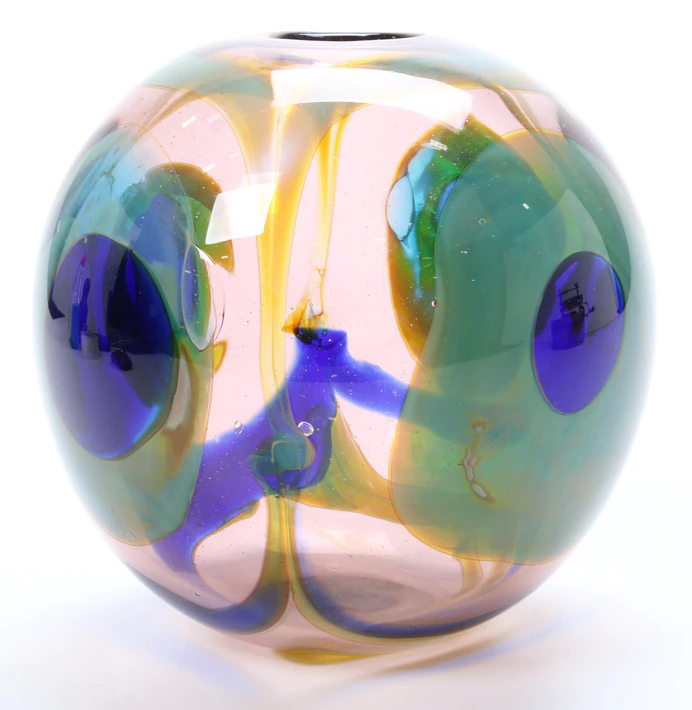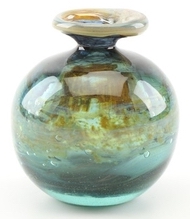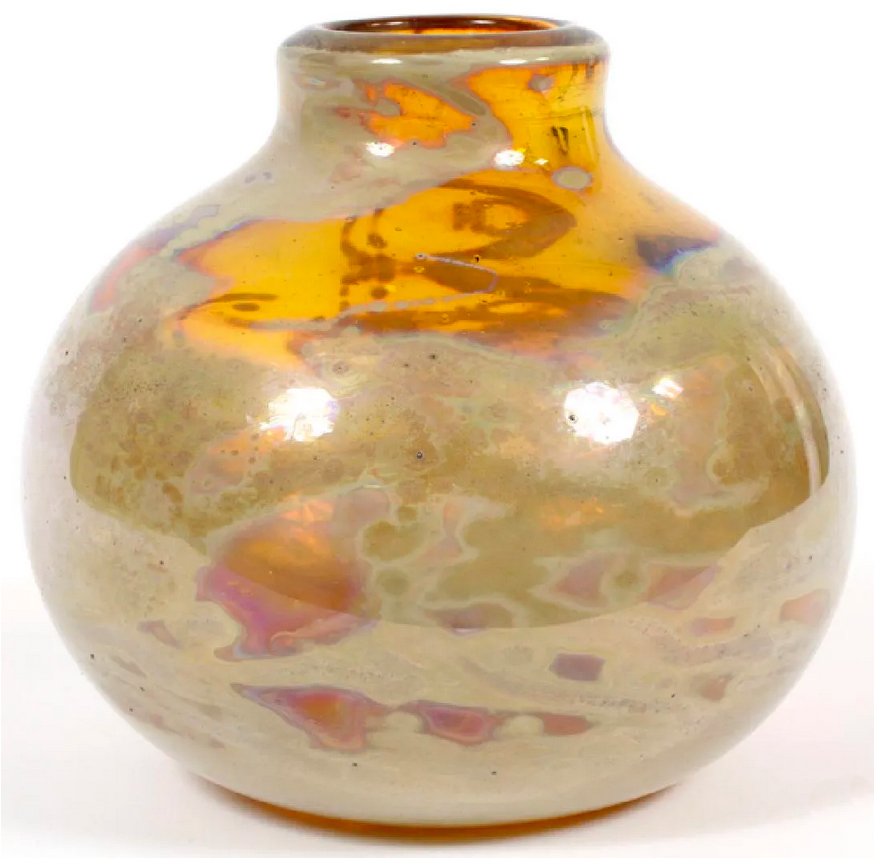I’m a huge fan of studio glass and the studio glass movement that developed glassmaking techniques allowing artists and designers to work directly with molten glass themselves. It sprang out of the ground-breaking experiments run by Harvey Littleton and Dominick Labino in Toledo in 1962 and, later, in Wisconsin. Their student Sam Herman then took these techniques to the UK and many other parts of the world. But there are many other early, skilled and talented studio glass artists whose names are unsung, and have even been forgotten and lost. Driven by studio glass in my collection, this short series of blog posts hopes to start to correct that.
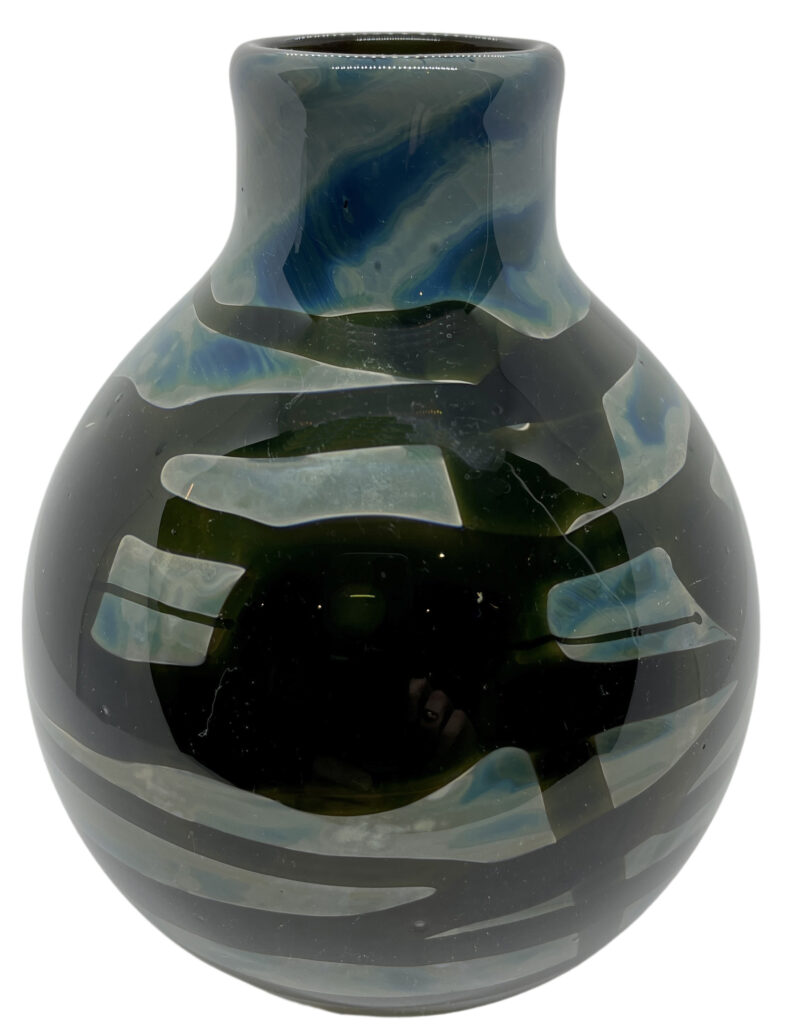
From the Mark Hill Collection
William Warehall was born in Detroit, Michigan in 1942 and, although listed as an ‘art educator’, he was also a talented and successful ceramicist and glass artist. He began his studies at the South Macomb Community College from 1961-64, received his Bachelor of Fine Arts degree at Wayne State University in Michigan in 1968, and received his Master of Fine Arts award at the University of Wisconsin-Madison in 1971. His latter studies would have put him in contact with the burgeoning glass department at Wisconsin, founded by Littleton who was a ceramicist himself.
Warehall clearly believed his future lay in education rather than being a glass artist as his impressive list of posts, which began when he was still studying, indicates:
1967-68 – Teaching Assistant, Wayne State University, Michigan
1969-70 – Program Assistant (Ceramics) & Project Assistant (Glass), University of Wisconsin-Madison
1970-71 – Program Assistant (Ceramics), University of Wisconsin-Madison
1971-73 – Instructor of art, University of Minnesota, Minneapolis
1972-73 – Artist in Residence, Long Island University
1973-77 – Assistant Professor of Art, California State University, San Bernardino (Warehall is quoted as having founded the glass department here, presumably around this time.)
1974-75 – Artist in Residence, University of Southern California
1977-78 – Assistant Professor of Art, Louisiana State University, Baton Rouge
1978-82 – Associate Professor of Art, California State University, San Bernardino
1982-?? – Professor, California State University, San Bernardino
1986 – Exchange Professor, Virginia Commonwealth University, Richmond
1988-90 – Chair, California State University, San Bernardino
1993-?? – Artist in Residence, Buckingham College Art & Design, High Wycombe, England
1995-97 – Chair, California State University, San Bernardino
He was a member of the College Art Association, the American Crafts Council, and the National Council of Art Administrators (all in the US).
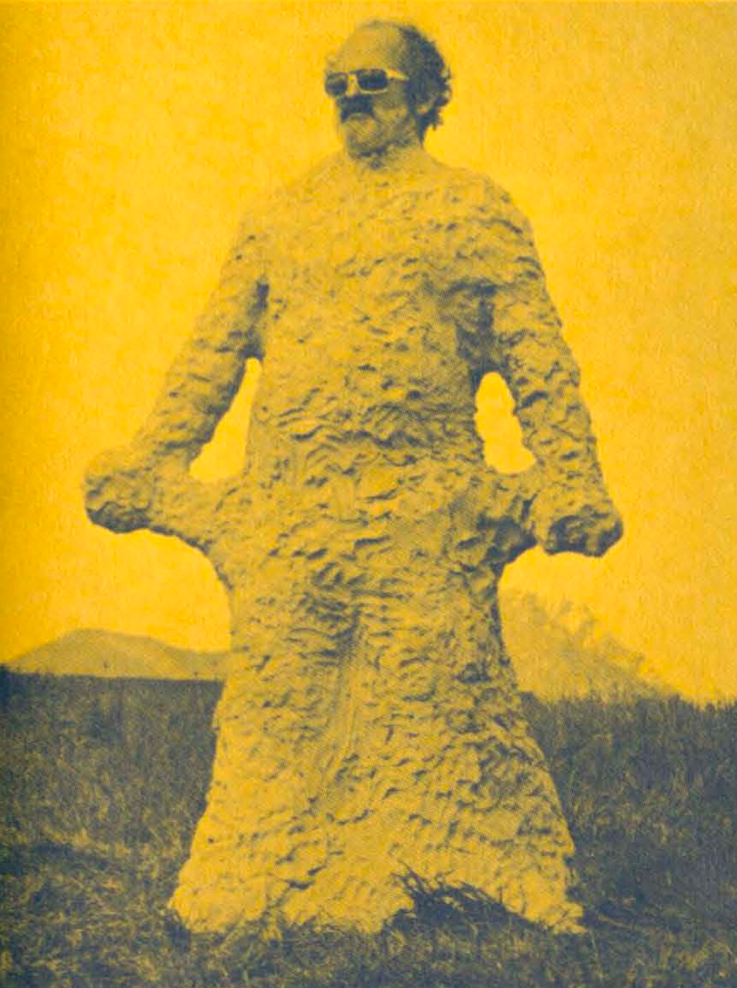
He used the glassmaking and ceramics facilities at each institution, so taught generations of artists by demonstration. Some of his work is recorded as having been displayed in exhibitions and presumably sold. I have been told that Warehall was also one of the first artists invited to exhibit at the eminent Habatat gallery when it was founded in 1971. A ceramics exhibition catalogue published by the Museum of Contemporary Crafts of The American Crafts Council in 1971 states that his work was in the collections of Wayne State University, the University of Wisconsin-Madison, Viterbo College, La Cross State University, and the DeBarry State Museum of Art. The catalogue, entitled ‘Clayworks: 20 Americans’ also included work by the notable artists David Gilhooly, Robert Arneson, and Clayton Bailey, so Warehall was clearly considered important enough to be included. In his rather cool portrait for the catalogue (right), he seems to have turned himself into a clay sculpture!
An American glass artist called Ed Biggar wrote an article about his visit to Lauscha and said “In the early 90s … David [Svenson] and I were both learning off hand glassblowing at Cal State University in San Bernardino. Professor William D. Warehall was our guiding force and while there he encouraged us to stretch the medium any way we thought might work for us to make our art. That was a magic time!” And it’s clearly here – in educating and freeing generations of glass artists – that Warehall’s importance lies. But what of his works in glass? There seems to be no record of much of it, apart from images of a couple of pieces sold online over the past few years.
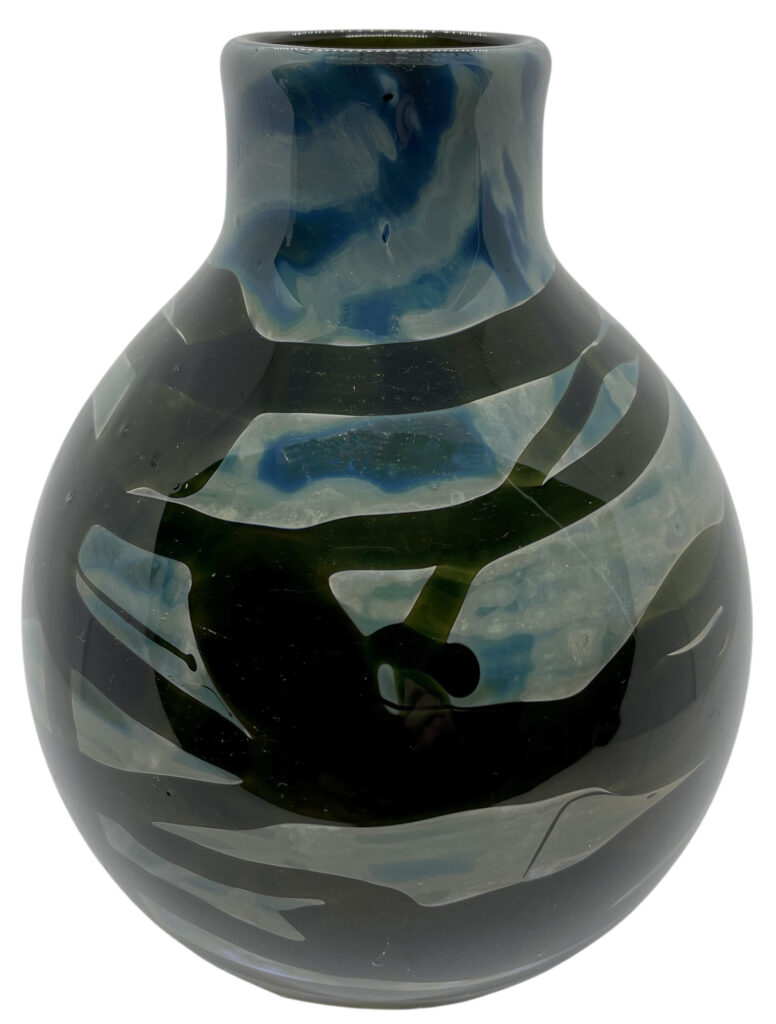
From the Mark Hill Collection
The glass he made is great quality as the above images show – he was clearly both talented and skilled. The piece of his work that I own (left) is a superb example.
An apparently black, but actually dark olive green, body is covered in cloudy grey-blue over which more dark olive green trails have been randomly applied, before being flashed in a very thin layer of colourless glass. The area around the base has signs of silver chloride showing as a mottled and cloudy beige iridescence, probably where the metal oxide leaked from the moil. The opaque appearance is furthered with a very light silvery, almost mirrored iridescent effect. The simple form is functional and highly proportional, comprising the geometric forms of a sphere and a cylinder which contrast against the ‘organic’ randomness of the surface decoration.
The base is ground flat and has the remains of the pontil mark. Around the base is his signature, inscribed with a diamond point and reading ‘Warehall 1974 C-101‘. As you will see, his signature appears to read ‘Warehull‘, which may have put other collectors and dealers off the scent when researching. I do not know what the C-101 relates to – perhaps it indicates a location (C = California State University?), an inventory number, or even a way of dating his work (10 = October, 1 = 1st October?).
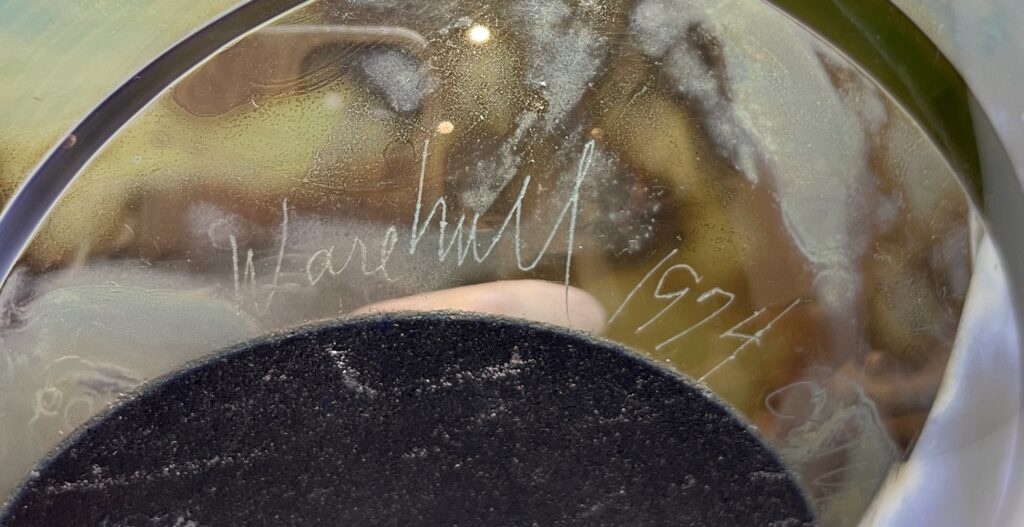
William Warehall Signature 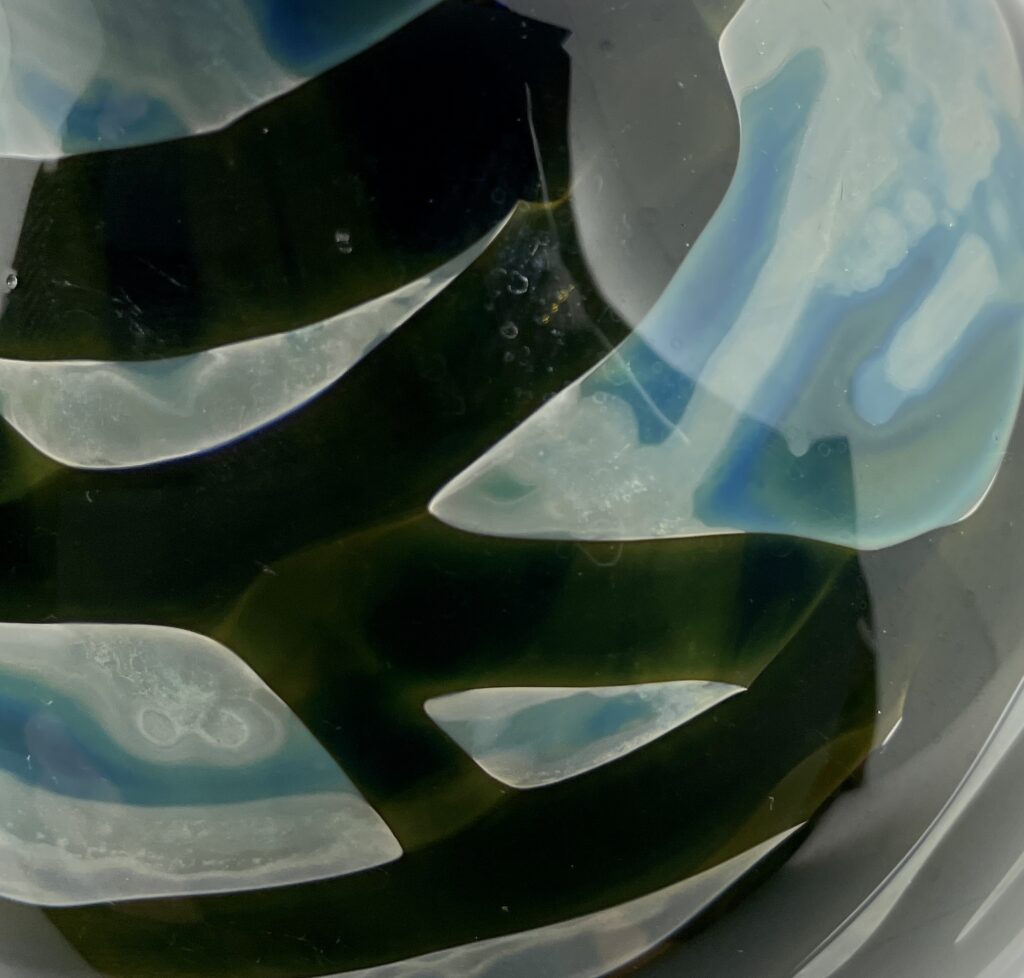
Detail of Trails & Swirls 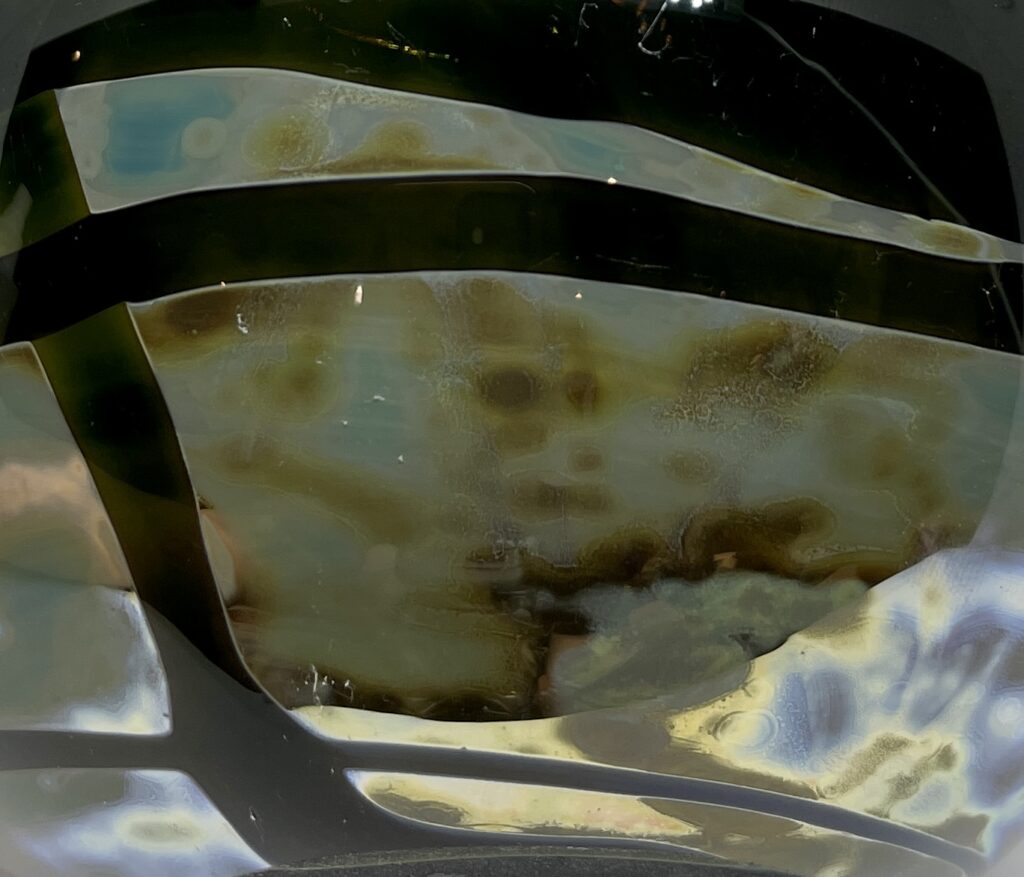
Detail of Silver Chloride
This post is a work in progress. If you have any other information about William Warehall and his studio glass, or particularly if you studied under him, please contact me.


